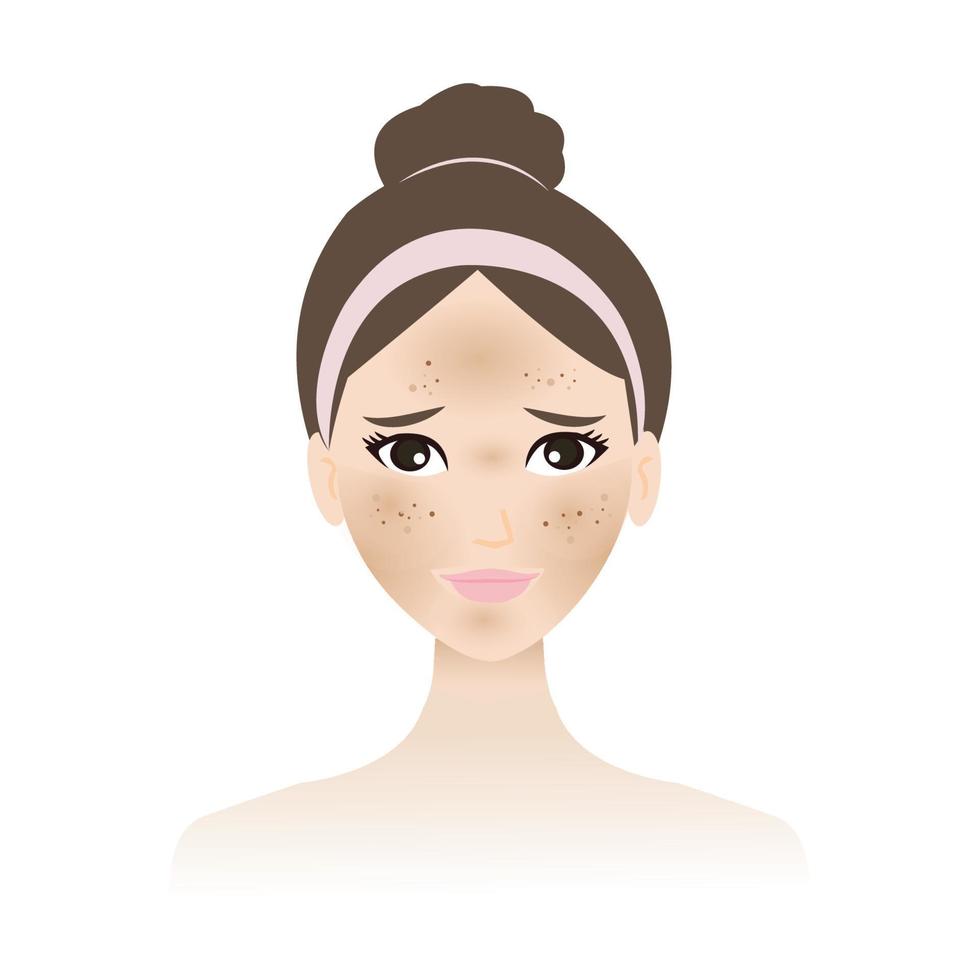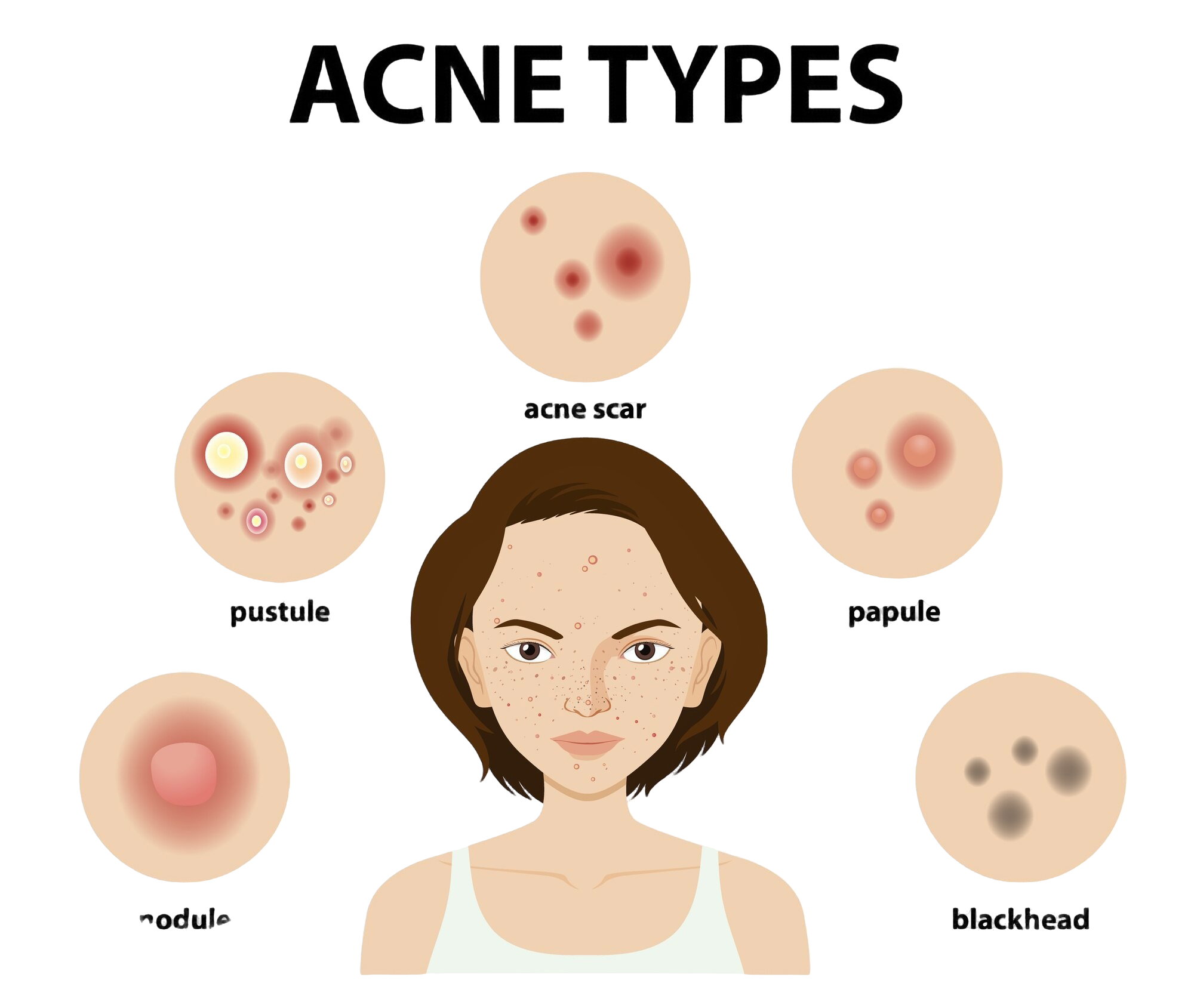Article: Hyperpigmentation - Guide for Glowing Skin

Hyperpigmentation - Guide for Glowing Skin
Hyperpigmentation occurs when excess melanin production leads to dark spots, uneven skin tone, and discoloration. It can be triggered by sun exposure, acne scars, hormonal changes, or inflammation. The key to treating hyperpigmentation lies in a combination of chemical exfoliation, hydration, pigment inhibitors, and essential skincare basics.
Causes of Hyperpigmentation
1. Sun Exposure – UV rays stimulate melanin production, leading to sunspots and uneven skin tone.
2. Hormonal Changes – Conditions such as pregnancy, birth control use, and hormonal imbalances can cause melasma.
3. Post-Inflammatory Hyperpigmentation (PIH) – Acne, wounds, or skin irritation can leave behind dark spots.
4. Aging – Over time, the skin produces excess pigment, resulting in age spots and uneven tone.
5. Genetics – Some individuals are more prone to hyperpigmentation due to hereditary factors.
Forms of Hyperpigmentation
1. Sunspots (Solar Lentigines) – Dark patches caused by prolonged UV exposure.
2. Melasma – Hormonal pigmentation that often appears in symmetrical patches on the face.
3. Post-Inflammatory Hyperpigmentation (PIH) – Dark marks left behind by acne, cuts, or irritation.
4. Freckles – Small brown spots that darken with sun exposure.
5. Age Spots – Pigmentation that develops over time due to aging and sun exposure.
6. Uneven Skin Tone – Blotchy skin caused by excess melanin production.
Melasma vs. Hyperpigmentation: What's the Difference?
Hyperpigmentation is a general term for any darkening of the skin due to excess melanin production. It can result from sun exposure, acne scars, aging, or inflammation.
Melasma, on the other hand, is a specific type of hyperpigmentation triggered by hormonal changes. It often appears as symmetrical patches on the cheeks, forehead, or upper lip and is commonly seen during pregnancy or with birth control use.
Key Difference: Melasma is hormonally driven and tends to be more stubborn, whereas general hyperpigmentation has various causes and often responds more quickly to treatment.
The Best Approach to Fading Hyperpigmentation
1. Chemical Exfoliation (To Remove Pigmented Cells)
· Mandelic Acid (The Ordinary Mandelic Acid 10% + HA) – A gentle AHA suitable for sensitive skin that helps with pigmentation and texture. The ordinary Mandelic Acid 10% + HA Peeling
· Lactic Acid (The Ordinary Lactic Acid 5% + HA / 10% + HA) – A mild exfoliant that brightens skin and improves tone. The Ordinary Lactic Acid 5% & The Ordinary Lactic Acid 10%
· Glycolic Acid (The Ordinary Glycolic Acid 7% Toning Solution) – A deeper-penetrating AHA that helps fade hyperpigmentation and refine skin texture. The Ordinary Glycolic Acid 7% Toning Solution
· Salicylic Acid - a beta hydroxy acid (BHA) that plays a crucial role in treating hyperpigmentation, especially for those with acne-prone or oily skin.
2. Hydration (To Strengthen the Skin Barrier)
· TirTir Hyaluronic Acid Toner – Deeply hydrates and soothes the skin, keeping it plump and healthy. Get TirTir Toner Here.
· Isntree Hyaluronic Acid Toner – Provides intense moisture and supports skin repair. Shop Hyaluronic Acid Toner.
3. Pigment Inhibitors (To Prevent Further Darkening)
· Vitamin C – An antioxidant that also helps brighten skin and fade dark spots over time.
· Arbutin – Reduces melanin production, helping lighten hyperpigmentation.
· Tranexamic Acid – Effectively reduces stubborn dark spots and melasma.
· Kojic Acid – Inhibits melanin production, making it a powerful ingredient for brightening.
4. Skincare Basics (For Overall Skin Health)
· Sunscreen (Essential!) – Prevents UV damage, which worsens hyperpigmentation. Shop Sunscreens at Luminr.
· Moisturizer – Seals in moisture and strengthens the skin's moisture barrier. Shop Moisturizers at Luminr.
· Gentle Cleanser – Cleanses the skin without stripping its natural oils. Shop Cleansers at Luminr.
HYPERPIGMENTATION SKINCARE ROUTINE
Step 1: Basic Skincare
Start with a gentle cleanser, moisturizer, and sunscreen tailored to your skin type. These form the foundation of healthy skin.
Step 2: Hydration
Hydrating the skin enhances plumpness and improves product absorption. Use hydrating toners, essences, and serums to boost water levels in the skin. The more hydration, the better!
Step 3: Exfoliation
Exfoliation removes dead skin cells, revealing a more radiant complexion. Opt for AHAs such as lactic acid, mandelic acid, and glycolic acid, which are effective for brightening and resurfacing the skin.
Step 4: Retinoids
Retinoids promote cell turnover and renewal while boosting collagen production, which firms and rejuvenates the skin.
Step 5: Double Cleansing
A two-step cleansing method ensures thorough removal of impurities like dirt, sunscreen, and makeup for a deep, refreshed cleanse.
Step 6: Antioxidants
Vitamin C is a powerful antioxidant that protects against free radicals and acts as a second layer of defense alongside sunscreen. It also enhances skin radiance due to its brightening properties.
Step 7: Niacinamide
Niacinamide regulates sebum production, minimizes pores, and is often combined with tyrosinase inhibitors for additional brightening effects.
Final Thoughts
Hyperpigmentation requires patience and a consistent skincare routine. Combining exfoliation, deep hydration, pigment inhibitors, and protective skincare basics will help you achieve an even-toned, radiant complexion. For stubborn cases, professional treatments like chemical peels or laser therapy may be beneficial.
Stay tuned to Luminr for expert skincare advice and product recommendations!
Shop from Luminr today! Amazing Offers, affordable prices.





